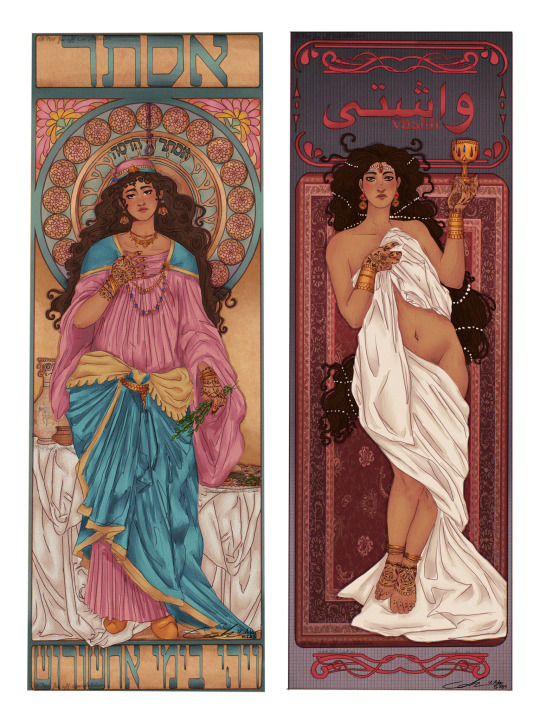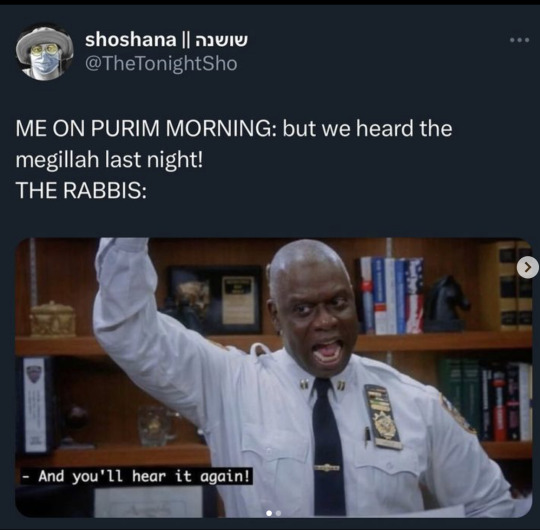Text

Torah Finials, early 1700s. Italy, Mantua. Silver; overall: 54.6 x 14 cm (21 1/2 x 5 1/2 in.). The Jewish Museum, NY. Gift of Samuel and Lucille Lemberg
16 notes
·
View notes
Text


The Song of Songs / שיר השירים, Illustrated by Zeev Raban (1890 - 1970). Hebrew and English. Bound in Bezalel leather cover with a copper relief of queen of Sheba. Published by Shulammite, circa 1950. 30 pages. Approximately 24 x 34 cm. x
96 notes
·
View notes
Text

Knish vendor, 1953. Knishes are fist-sized dumplings, wrapped in dough and baked, with fillings such as potato (the most common), kasha (buckwheat), or cabbage. Carts such as this were a fixture on New York sidewalks until the Giuliani administration cracked down on them in the 1990s.
Photo: Ernst Haas via Pastvu
772 notes
·
View notes
Text
"New Testament God is merciful and kind, Old Testament God is wrathful and vindictive!"
Old Testament God: "Look kid, you just invented murder and fratricide, even the planet itself is freaked out about it, I can't just let that slide, but you are right that people will want to commit vigilante justice against you, so you know what? I'm gonna give you a special tattoo to warn everyone that you're off-limits."
Old Testament God: "The Earth is crying. The Earth is literally crying, that's how badly the humans have messed things up. I'll give them a couple centuries, hopefully they'll fix things by then, but if not I'll have to do something drastic"
Old Testamemt God: "I might have gotten a bit carried away with the whole 'flood the Earth' thing. Gonna make sure not to do that again"
Old Testament God: "Okay, fine, if you can find me ten people in Rapist City who aren't evil, I won't nuke it. Not gonna go any lower than ten"
New Testament God: "Yeah, if you don't devote your entire life to me I will torture you for all eternity. Peace and love!"
573 notes
·
View notes
Text

Yehudit Shadur (יהודית שדור, Israeli, 1928 - 2011), Psalms 92:13, "The Righteous shall Flourish like the Date Palm".
Dark purple cut paper on pale background and metallic underlays; 16.5" x 12.5". - The seven branches of the palm tree is suggestive of the Menorah. This psalm is recited in the [Erev Shabbat] prayer service in the synagogue. x
צַ֭דִּיק כַּתָּמָ֣ר יִפְרָ֑ח כְּאֶ֖רֶז בַּלְּבָנ֣וֹן יִשְׂגֶּֽה׃
The righteous bloom like a date-palm;
they thrive like a cedar in Lebanon;
(from Sefaria x )
96 notes
·
View notes
Photo

A pair of Polish silver Tefillin boxes, probably Mojzsez Princenthal of Warsaw, circa 1910
Catalogue note: the inscriptions read “An eternal memorial for our grandson, David, on the occasion of his 13th birthday, may he live a long life.” and “Hillel and Elka Alterman, 1913”.
160 notes
·
View notes
Text

Purim wall decoration in Hebrew and Yiddish belonging to the Ashkenazi community of Jerusalem, mid-19th century
180 notes
·
View notes
Text
So, if a Robot is programmed by a Jewish woman, to be a sort of child for her, and the robot views herself as the woman’s daughter, would the robot be Jewish?
9K notes
·
View notes
Text

Torah Ark from Conegliano, Italy in Jerusalem, ca. 17th century
Conegliano is a small village in Venetia that has had a thriving Jewish community from the year 1397. A synagogue was built there in the 17th century and was used up until the First World War, when Jewish soldiers of the Austro-Hungarian army held the last service during Yom Kippur of 1917. In 1951, the synagogue was taken apart and sent to Jerusalem where it was re-erected on the second floor of the German Compound. The Compound was formerly a Catholic Compound, until they moved elsewhere and it was (and still is) used by the Italqim, the Italian Jewish community, for weekly prayer services. Here, the oldest surviving Italian Torah curtain, or parochet, which dates to 1572, is on display.
271 notes
·
View notes
Text






As the Good Book says, "When a poor man eats a chicken, one of them is sick." Where does the Book say that?
2K notes
·
View notes
Text






From the series “Remnants: the last Jews of Poland.” Photographs by Tomasz Tomaszewski, 1980 - 1985
In a five-year voyage of personal discovery, Tomasz Tomaszewski and his wife Malgorzata Niezabitowska crisscrossed Poland to document the lonely survivors of the country’s once-vibrant Jewish community. ″To most Poles, especially those born after the war, Polish Jews are as abstract and as remote in history as the mysterious Etruscan people to contemporary Romans,″ the couple wrote in an introduction to the photo exhibit, ″But Jews lived here with us for 1,000 years. Normally, when a culture disappears, it takes a millenium or more. With Polish Jews it took only 20 years. What was left on this soil from the great and luxurious Jewish civilization? Our attempt to answer this question was for us a temptation and at the same time a need to face a painful and complex problem." Between 1980 and 1985, the couple drove more than 48,000 miles in their car, interviewed more than 3,000 people, and Tomaszewski took more than 7,000 photographs.
2K notes
·
View notes
Text

ויהי בימי אחשוורוש…
פורים שמח וצום קל לכולם !
Taking a break from my usual minhag of drawing a comic page for Purim just because I was so inspired by Alphonse Mucha lol!
How many symbolic details can you spot?
2K notes
·
View notes
Photo


Two shabbat and memorial lamps of Jewish women
Morocco, 19th century
234 notes
·
View notes
Text

Entrance to the prayer hall in the synagogue of Szeged, Hungary, 1982
79 notes
·
View notes
Text


two little purim treats bc purim is soon!!!!!!!!
jewishmemesonly
752 notes
·
View notes


